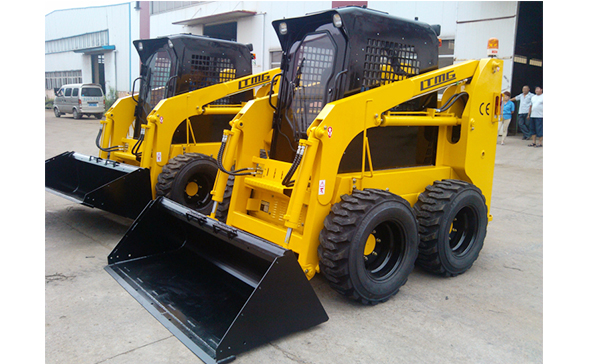Skid steer loader is a kind of small engineering machinery that realizes vehicle direction by using the difference of linear speed between two wheels on both sides, as a kind of high-efficiency and multi-functional engineering machinery is mainly used for the operation in the narrow space such as urban infrastructure, construction site, workshop, warehouse, wharf, and even inside the cabin of a ship. Due to the reflection of noise from the surrounding buildings, the same skid steer loader appears to be noisier when working in a narrow space than when working in an empty and unoccupied site. It often affects customer satisfaction, driver's operating comfort, and also causes environmental pollution. So where does the noise of a skid steer loader actually come from, and what can be done about it?

I. The source of noise
For skid steer loaders, the noise mainly comes from the radiation noise and cab driver's ear noise in two parts.
1. Radiation noise: mainly by the engine exhaust produced by the noise, fan rotation noise, hydraulic pumps and hydraulic motors of the parts produced by the noise and so on.
2. Noise in the driver's ear in the driver's cab: mainly by the hydraulic traveling pump, hydraulic work pump and the engine formed by the overall vibration caused by the structure of the noise.
The above two types of noise superimposed on each other, interacting with each other, resulting in uneven noise.
II. Measures to reduce noise
1. Air filter, muffler treatment
a. Change the way of support: the two were originally connected to the engine, can be changed to a fixed way with the frame, and at the same time to add vibration isolation pads, shims and so on.
b. They should be connected to the engine (or fan) through the elastic pipe.
c. Both of the high-frequency vibration is strong, and in a high-temperature environment, need to do heat-resistant damping treatment, such as paste self-adhesive asphalt class damping plate, thickness 3 ± 0.5mmm, while considering the replacement of the appropriate muffler.
2. Engine compartment inner wall treatment
d. The wall of the engine compartment is partially damped and sound-absorbing, and the sound-absorbing materials in the compartment should be heat-insulating, high-temperature-resistant, non-spontaneous combustion, non-flammable, and non-combustion-supporting.
e. The ventilation grille at the air inlet on both sides of the engine compartment is fixed by two screws and the frame, which leads to stronger vibration, and the improvement of the connection method can be considered.
3. Fan and radiator part of the treatment
f. Heat-resistant damping material is applied to the thin plate of the ventilation grille at the rear cowl door.
g. Change the opening form of ventilation grille to louver type, and paste sound-absorbing materials on both sides.
h. The fixing effect of the locking mechanism of the rear hood door is not good, and the gap at the bottom edge of the rear hood door is large, thin rubber strips can be used to improve the sealing.
i. Replacement of large-diameter, small-speed low-noise fan, conditions allow, can be installed fan clutch, in the lower temperature can be realized when the fan shutdown, not only reduces the noise, but also reduces energy consumption, but this is to be in the space and cost considerations whether it is necessary to carry out.
4. Engine upper hood door treatment
j. Remove or reduce the upper cowl door ventilation grille to reduce transmitted sound.
k. Damping and acoustic treatment on the lower side of the upper cowl door.
l. Use thin rubber strips to close the rear edge of the upper cowl door and the radiator upper frame.